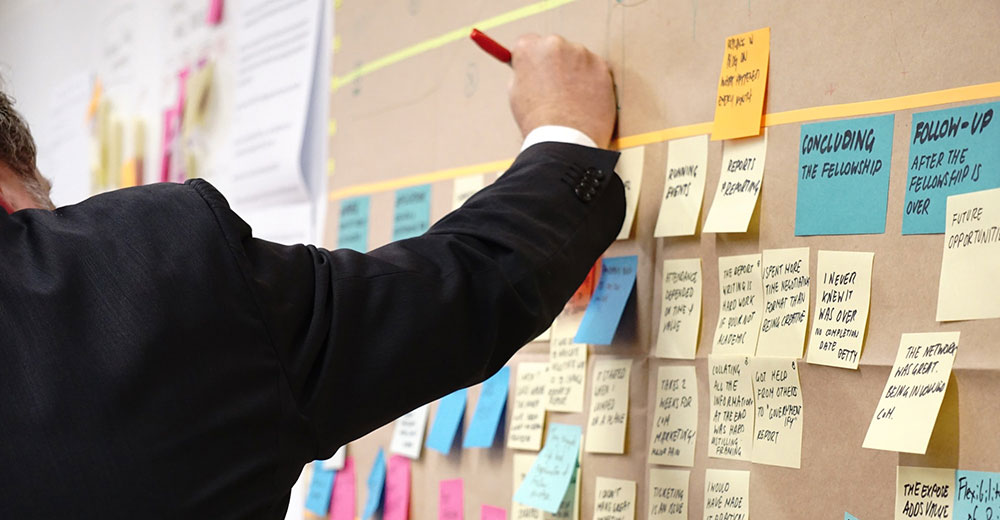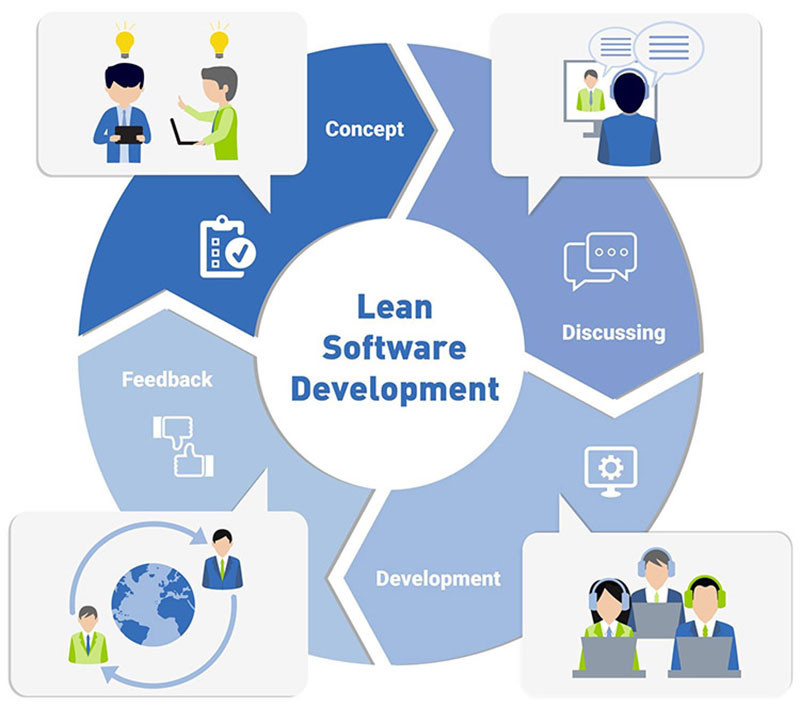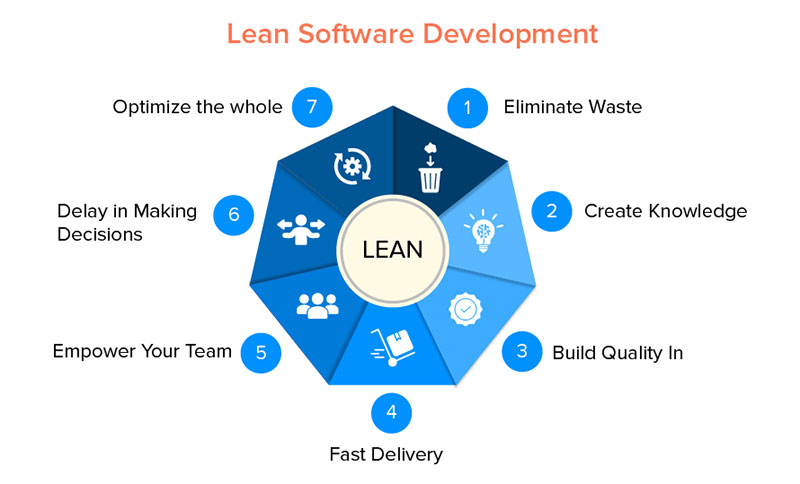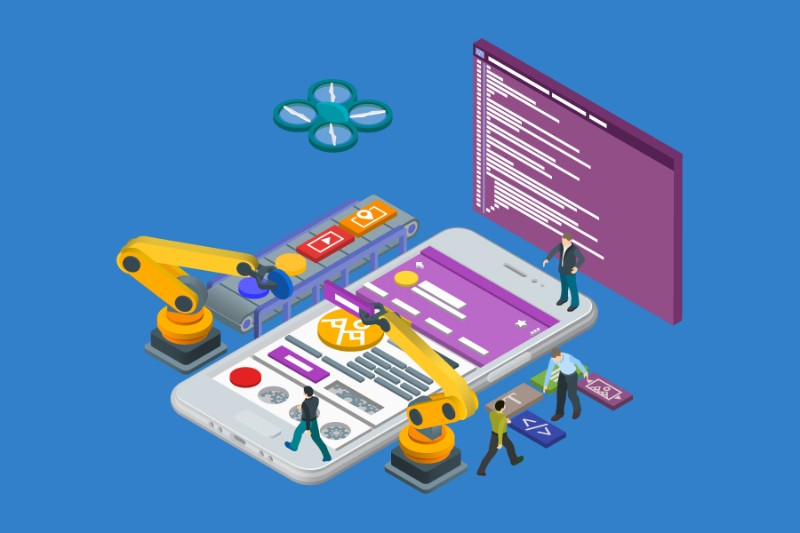This Is Why Lean Software Development Is Amazing

Lean production principles are widely employed in different industries. They are also applicable to software development.
Using these principles leads to optimized programming efforts, budgeting, and lower defect rates. Optimizations can be up to 33%.
Many organizations can benefit from Lean development principles. They eliminate extensive pre-planned specifications.
User stories form the basis for the software development process. These are easier to understand than long lists of specifications.
Making something that no one wants or likes is a waste of time and money. Lean manufacturing focuses on providing quality and value for clients and production teams. Utilizing lean manufacturing together with manufacturing software will improve the overall production system and reduce supply chain lead times.
This article will first discuss the history of Lean development. Then it will show how to apply it and why it is so good for companies of any size and makeup.
Applying these principles is not straightforward; it requires a change in thinking. This guide also explains what the concepts of value, wanted, and others mean in the setting of Lean software development.
What is Lean Software Development

In general, Lean development is a management framework. It helps to optimize the use of time and resources.
This eliminates waste and delivers the product in its most essential form.
The basis of the Lean philosophy is an iterative cycle of trial and error. Some have summarized it as: “fail early to succeed sooner.”
Innovation is at the core of developing digital products. Yet, failure is a healthy element of a software development process as well.
Another expression used in this connection is Minimum Viable Product, or MVP, strategy.
A development team markets a minimalistic version of their products. Then they use user feedback to learn what is good about the product or what consumers would like to see added.
Agile or Lean principles are very similar. They both focus on the people in the team, rather than on the tools that the project uses.
They both give the people a lot of power and freedom to act and make unified decisions.
But there are also some differences. Lean focuses on the optimization of workflows.
It does this by monitoring the amount of work that a process requires. It aims to eliminate any part of the process that does not add value.
On the other hand, Agile principles break down tasks and organize them into sprints. It focuses on small amounts of work that are then executed quickly and efficiently.
Even though there may be parts of the sprints that have no direct value, they are not eliminated. The focus is more on delivering the working product.
The History of Lean Software Development
To understand how lean software development started, think back to the middle of the last century.
The Japanese car manufacturer Toyota was experiencing problems with its product delivery. They noticed that the manufacturing processes were too long.
Hence, the company was not able to deliver its products on time. They understood that they needed a different project management system.
The Lean manufacturing principle finds its origin in car production. If you know about Toyota, this isn’t news to you. If you don’t, you can check out this video:

Yet the same principles are equally applicable to other fields.
It also works in fields like banking, engineering, product development, and supply chain. It has only recently that these principles found application in software development.
After the publication of the Agile Manifesto, developers began to take an interest in other approaches to their work. The Lean philosophy found use in software development around 2003.
What interested the Lean development pioneers was the focus on the complete organization. The introduction and final achievement of Lean projects are by iterative cycles.
Every cycle, developers remove anything that does not add value to their product. That helps to constantly test and check the product and detect bugs.
What are the Strengths of Lean Software Development?

The introduction of the Lean software development methodology does more than streamline teamwork. It has benefits for the entire organization.
It improves cost-efficiency, productivity, and profit. This is the result of the combination of well-defined principles and work practices.
Lean principles focus on making products that exactly fulfill the needs of customers. It prevents a development team from making features that no one wants.
To do this, it obtains information straight from the source, the customer.
A Lean development strategy consists of short iterations. This gives the team a chance to work with a small set of plans to start with.
Then, in small iterative cycles, the developers make needed adjustments and anticipate situations. Thus, they have the power to work fast and put improvements in place in a flexible way.
This provides major advantages in decision-making.
Lean and Agile software development methods make organizations reconsider their quality control systems. That in turn changes the way they deal with release readiness.
Quality monitoring is not only a job for higher management. Rather, it becomes part of everyday communication between members of the developing team.
Finally, the focus of Lean software development is positive. It looks in the first place at adding value, not at eliminating costs.
We can help you turn your idea into reality, take over your existing project, or extend your current development team.
Schedule a free consultation at hello@tms-outsource.com, or fill out the form and we will follow up with you shortly.
Lean Software Development’s Strengths
It Eliminates Wasteful Losses
Lean software development aims at delivering essential features.
Once the minimal viable product is on the market, the development team can learn what to improve. They can also see how to prioritize this work.
Customer input is vital in this stage. Unproductive work and investments are thus prevented.
It Generates Innovative Solutions
A Lean software development team will want to add value and invest time in innovating. Innovation is at the core of present-day advancement.
It Shortens the Development Cycles
The advantages of shorter production times are obvious. The team can deliver more in a shorter amount of time.
That allows an organization to deliver more projects, which benefits the finance department. It also helps to keep customers satisfied.
Rationalizes and simplifies the development process
Lean software development principles help make the development process simpler. It eliminates unnecessary stages.
That makes it more focus-oriented, faster, and cheaper. It saves on the most important resources, money, and time.
Increases the team involvement rate
A Lean development team is much more involved. This is because it puts a large part of the decision-making in their hands.
Employees that feel empowered form a more motivated team. The value of this cannot be overstated.
Lean principles eliminate micromanagement and the forced execution of decisions. Both are demotivating management techniques.
Motivated team members with decision-making powers deliver higher quality end products.
It Reduces Redevelopment of the Product
Having to redevelop because a product was not made right in the first place, is inefficient.
Lean Management Tools

- Inventory management.
This reduces the number of operations. It involves the application of constraint and queuing theories.
- Kanban
Kanban is a workflow management system of Japanese origin. Its goal is to prevent the simultaneous completion of different process stages.
This is to prevent the overloading of other process stages.
- Value stream mapping.
This is a method to visualize an entire software development lifecycle. It starts with the client’s request and ends with the deployment stage.
It helps to understand and optimize the amount of time spent on things like processing and downtime.
Seven Lean Principles of Software Development

The next section is based on Mary and Tom Poppendieck’s book “Lean Software Development: An Agile Toolkit”. This shows the effective application of lean principles to the development of software.
Below is a summary of the principles.
Eliminate Waste
The elimination of waste is an indirect focus of the Lean methodology. The production of waste takes away value from the product that the client receives.
In this context, waste can refer to activities like rebuilding code or testing code. Or doing any activity more than once.
This may sound innocent but it bears a variety of quality issues. Lean means being more efficient.
According to the methodology, it’s vital to eliminate anything that does not add value. More specifically, this refers to defects, partial work, idle time, and unnecessary features.
This reduction is the first principle of Lean software development. It defines the entire philosophy.
Below is a list of types of waste that it tries to get rid of.
- Data duplication
- Engineering process delays
- Communication inefficiency
- Quality issues
- Tasks overload in log
- Unnecessary code and features
- Unneeded and stifling bureaucracy
- Unclear requirements
- Costs associated with the aforementioned
Build In Quality
A second guiding principle in any Lean development process is quality management. Poor quality management leads to different kinds of waste, as discussed above.
All development teams want to build quality into their work. Yet, quality is not always expressed in the product.
Consistent quality is only possible if this is part of disciplined practice. Often, attempts to make a quality product lead to waste in excessive testing.
A first step in building quality is free communication between the team and the client. This helps the development team to make the product the client wants.
A second one is to think about how to eliminate anything that creates waste. For example, make it a practice to immediately fix bugs, instead of making a long backlog.
Avoid task switching, test code immediately, and create automation. That keeps the quality of the product as high as possible throughout the development process.
In the Lean approach, team members build and integrate all the time. Continuous integration reveals if all parts are working and working together well.
That keeps each part of the development phase productive.
Create Knowledge
Lean software development has its roots in Lean manufacturing. In manufacturing, Lean deals with simplification and standardization of production lines.
So, it was necessary to generate knowledge of the process and make unusual changes. The Lean concept comes with the “amplify learning” concept.
This concept proved to be a game-changer.
As teams move through projects, they gain a deeper understanding of what a client needs. They also learn what the limitations of their products are.
The code that developers produce is usually not Lean from the beginning. They will find errors and bugs and then try to improve the code.
This is part of the learning process of developers. They gain knowledge by solving problems and making variations on their initial code.
This teaches an important lesson.
In Lean software development, improving existing code and building on it is the best approach. It generates more understanding than creating detail-oriented plans and documentation.
Decide as Late as Possible
Managing a project requires a balance in planning. Planning is necessary, but a long rigid list of tasks and dates is counterproductive.
Planning is not the same as making a commitment.
Software development has many uncertainties. Making late decisions allows for making better-informed decisions.
With time, more information becomes available. Hence, delaying a big decision is the best way to go.
Late decision-making is something to build into a project.
The Lean methodology aims to produce flexible software so that it is easy to add or change features. That is something to consider for after the release of the product.
But it emphasizes that software projects contain a high degree of uncertainty.
The next point may come as somewhat of a surprise. Late decision-making saves money.
This is due to the fact that it helps to shorten development times.
Deliver Fast
A happy customer is more likely to stay than one who has to wait for their product. Fast delivery also saves time for the developing agency.
Short development cycles are also beneficial in terms of the learning curve. Developers learn much more from the feedback they receive.
It allows clients time to think about final details, like design. Again, this helps to eliminate waste in both learning and communicating.
Of course, everybody wants to deliver their work as fast as possible. So, what is preventing them?
These are some common time consumers:
- Slow communication
- Over-engineering solutions
- Thinking too far ahead
Respect for People

Development teams need general plans and reasonable goals. With that, they should know how to work based on empowerment and self-direction.
They are very skilled people and well able to use their heads to solve problems.
Helping developers to develop independent thinking skills is part of the Lean approach. People that work and think autonomously can make very good decisions.
This philosophy is part of the Agile and Lean development methodology. Encourage independence and respect in the following ways:
- Proactive and effective communication
- Empower others to give their best
- Encourage healthy conflict
- Tackle any work-related issue as a team
Optimize the Whole
Lean software development does not leave room for narrow-mindedness. At best, optimizations will be local, not company-wide.
A small picture approach will hamper the growth of the company and will push it into a small niche in the market. Instead, think broad and long-term.
The perception of the user and the software’s characteristics must coincide. If that is the case, the customer will enjoy working with it and perceive the system as reliable.
Conceptual integrity means that the components of a software solution work well together. The total product is better than the sum of all components.
There will be a balance between efficiency, flexibility, responsiveness, and maintainability.
FAQs about lean software development
1. What is lean software development, and how does it differ from traditional software development methods?
A process known as lean software development places an emphasis on providing value to consumers through ongoing improvement, waste elimination, and a flexible strategy.
Lean software development places a greater emphasis on quick feedback loops, teamwork, and iterative development than traditional software development techniques, which promote predictability and thorough preparation. Lean software development aims to produce software that satisfies client expectations and is delivered in a timely manner.
2. What are the key principles of lean software development?
Customer focus, continuous improvement, waste reduction, respect for people, and visible management are among the core tenets of lean software development.
Software development teams are guided by these principles when making decisions that emphasize value delivery, streamline procedures, and support a culture of ongoing learning and development.
3. How does lean software development improve software quality and reduce waste?
Lean software development improves software quality and reduces waste by focusing on delivering only what customers need when they need it.
Teams must prioritize features and functionalities that provide the most value and cut out extra effort as a result. Teams can produce higher-quality software by continuously improving their procedures and identifying and eliminating wasteful elements like extra inventory or flaws.
4. What is the role of continuous improvement in lean software development?
Lean software development is founded on the idea of continuous improvement. Teams must therefore continuously review their procedures and search for methods to make them better.
Teams can find areas for improvement and make gradual changes to their processes by soliciting feedback from consumers and stakeholders. These incremental enhancements have the potential to produce large efficiency and quality gains over time.
5. How does lean software development integrate with Agile development methodologies?
Agile development approaches, which emphasize adaptability and teamwork, interact well with lean software development.
These strategies place a strong emphasis on customer value and ongoing improvement, as well as iterative development and quick feedback loops. Agile techniques frequently place a larger emphasis on team cooperation and human interactions, whereas lean software development places a greater emphasis on waste reduction and process optimization.
6. What are some of the most common challenges that organizations face when implementing lean software development?
When implementing lean software development, organizations frequently encounter obstacles like resistance to change, difficulty locating and removing sources of waste, and a lack of understanding of lean concepts. Organizations may also find it difficult to strike a compromise between the demand for high-quality software and the necessity for quick delivery.
7. How does lean software development address the issue of technical debt?
Technical debt is the term used to describe the accumulation of design or coding shortcuts that could eventually affect the software’s quality or maintainability.
Technical debt is addressed through lean software development, which places a strong emphasis on waste elimination and continuous improvement. Teams can lessen the likelihood of racking up technical debt by giving the elimination of pointless work and concentrating on providing high-value features as top priority.
8. What are some of the most effective tools and techniques for implementing lean software development?
Value stream mapping, Kanban boards, and continuous integration and delivery are effective methods and tools for adopting lean software development.
While Kanban boards give teams a visual depiction of work in progress and aid in task prioritization, value stream mapping assists teams in identifying sources of waste and inefficiency in their operations. Teams can swiftly and effectively produce high-quality software with the aid of continuous integration and delivery.
9. How can organizations measure the effectiveness of their lean software development practices?
Companies can monitor metrics like cycle time, defect rate, and customer satisfaction to gauge the success of their lean software development processes. Teams can use these indicators to pinpoint problem areas and track development over time. Teams can also ask clients and stakeholders for feedback to make sure their product is useful and meets their needs.
10. What are some examples of successful implementations of lean software development in the industry?
Lean software development has been successfully applied in a number of different sectors, including manufacturing, healthcare, and finance. For instance, healthcare organizations have utilized lean software development to streamline clinical operations and cut back on administrative activities to improve patient outcomes.
Lean software development has been utilized by financial institutions to cut waste and boost productivity. Lean software development has helped manufacturing organizations streamline their supply chains and lower the cost of their inventories. Lean software development methodologies can greatly benefit supply chain software development services, resulting in more efficient and effective solutions for businesses.
Ending thoughts on lean software development
Everybody is looking for better efficiency in the workplace. Achieving this often requires a change of mindset to improve work practices.
It also requires the right methodology. Many companies find the Lean software development approach works well for them.
It helps to streamline processes. It forces teams to cut out anything that does not contribute to the value of the product.
Another key element of this approach is to keep the software developers at the center. They are the ones that will deliver the quality product.
To summarize, these are the core principles of the Lean approach:
- Continuous improvement
- Respect for people
- Continuously experimenting, failing, and trying again
- Currently, Lean is the best management solution for the tech industry. It’s all about speed.
Mistakes are fixable in subsequent iterations.
Pay attention to what the end-user thinks about the product. That helps the development team to come up with fresh ideas.
If you enjoyed reading this article on lean software development, you should check out this one on the 7 phases of SDLC.
We also wrote about a few related subjects like software development principles, lean software development principles, how to hire a web development team, software development budget, business pivot examples, financial projections for startups, financial software development companies, IT outsourcing failures, and risk management processes.
- What Is a War Room and How to Use it in Project Management - April 23, 2024
- Business model innovation: What it is and why it matters - April 20, 2024
- What Is A Risk Assessment Matrix And How To Use It - April 8, 2024








